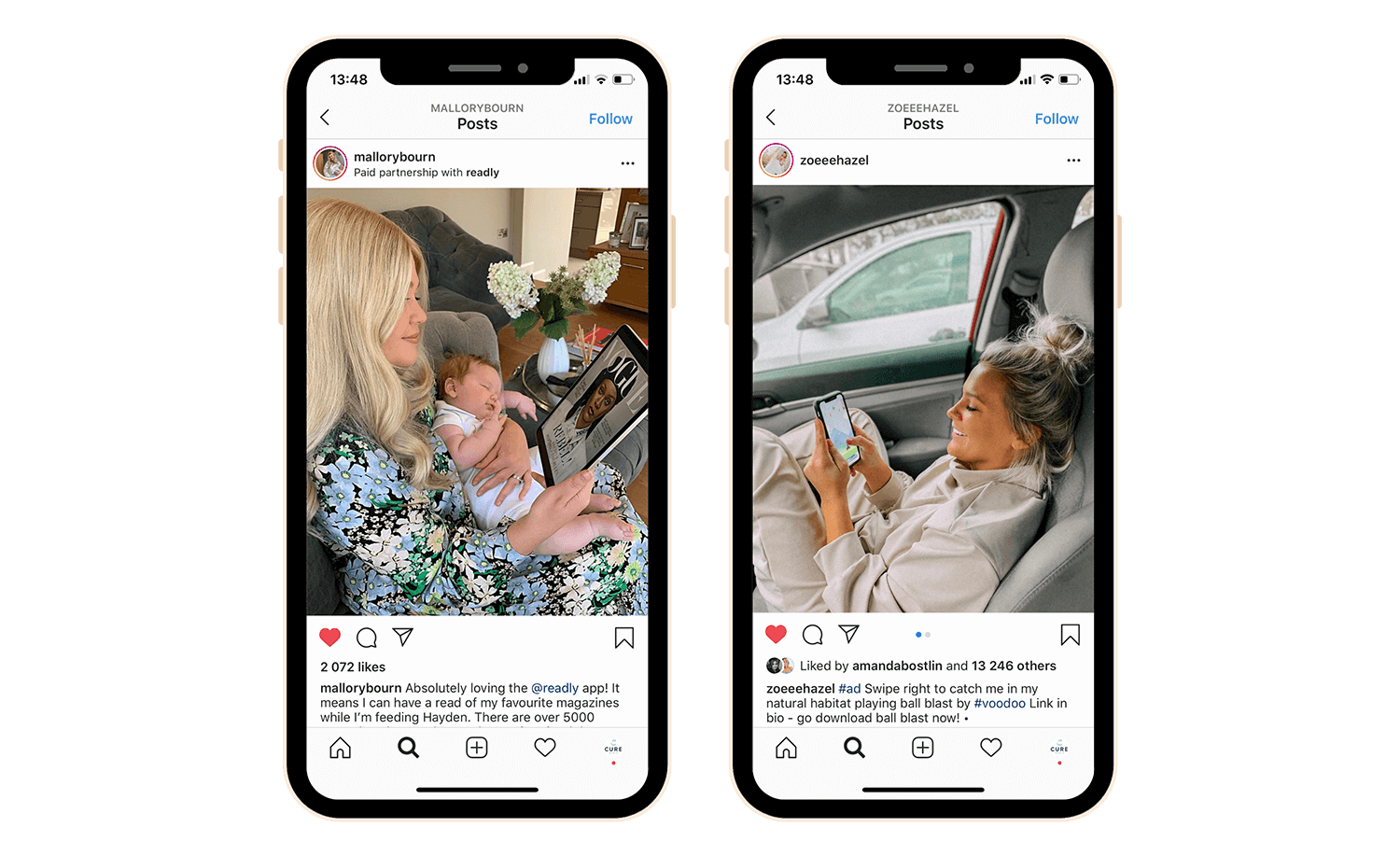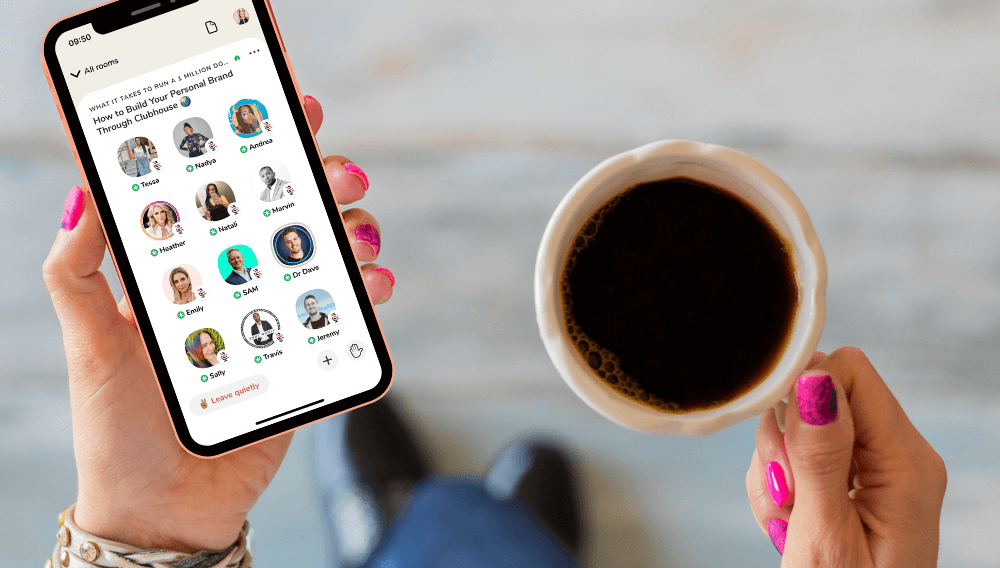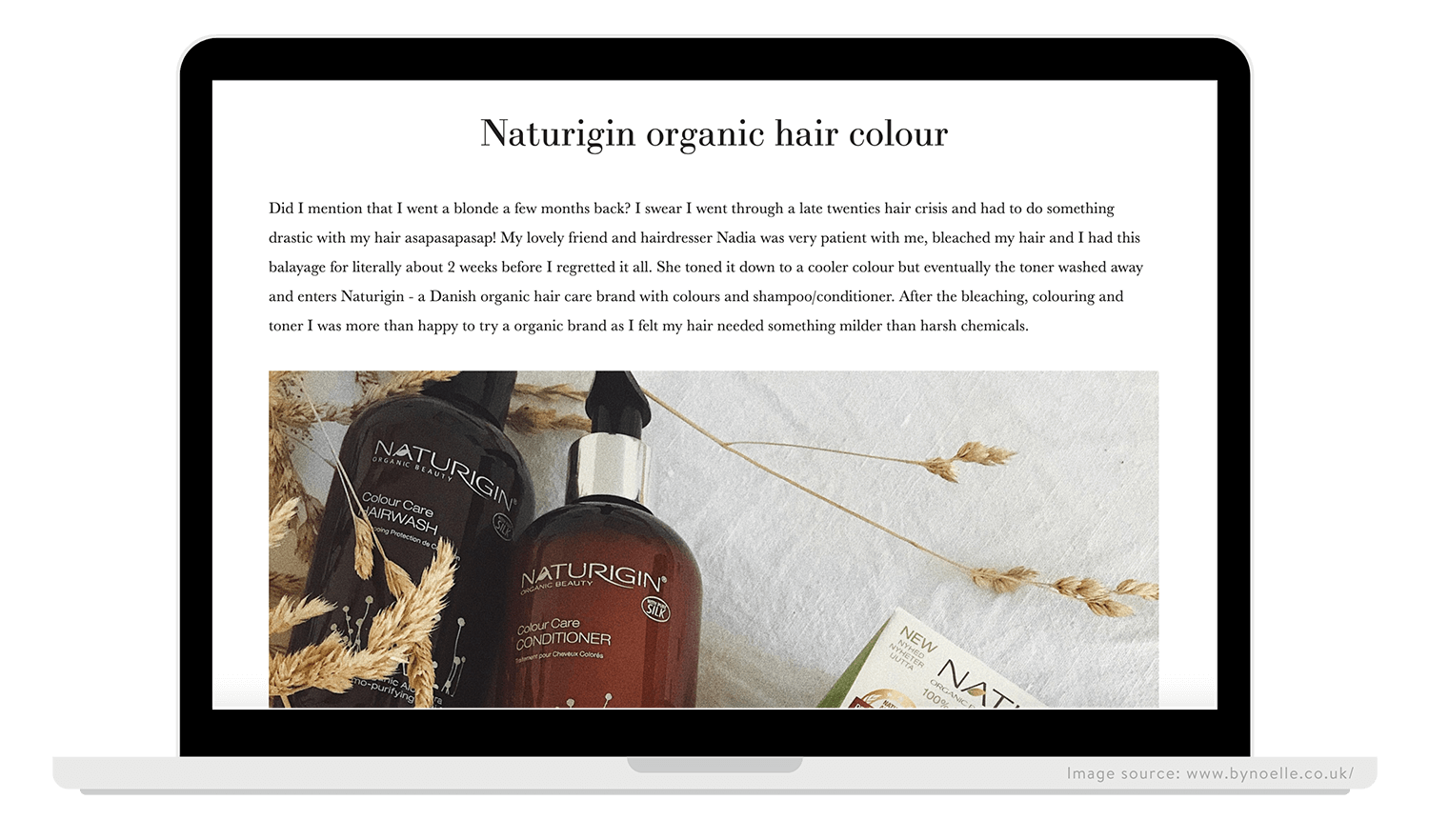The game plan for social media changes every minute, and users are quick to follow (and create) new trends. In spite of this, there are obviously some favourites that persist, of course, and which have been around for a good while. Are you familiar with Instagram, YouTube, TikTok, Snapchat, Facebook, and blogs, for example?
In this post, we’ll go into the most popular social media platforms in use today and how they work, both in general and from an influencer marketing perspective. So whether you’re a newbie or already a wizard on social media, we hope that you’ll learn something new!
Social media: an overview
In terms of number of users, the social media platforms Facebook, YouTube, Instagram, TikTok and Snapchat are the biggest in the world. Also at the top are the chat apps Facebook Messenger and WhatsApp, along with the Chinese equivalents of some of the aforementioned social media channels. No matter which country you look at, the use of social media is high. Taking two big markets as an example, 66% of the UK population are active social media users and in the U.S., more than 70% of the population holds a social media account.
When talking about who is on the various social media platforms, it’s important to bear in mind that usage varies significantly depending on age. TikTok and Snapchat are examples of platforms where use is higher among younger people, whilst Facebook and LinkedIn have an older user base. This may not come as a surprise considering that LinkedIn is an employment network.
When it comes to influencer marketing collaborations, Instagram is the leader – followed closely by YouTube. Facebook and blogs are significantly lower ranked than Instagram and YouTube.
Instagram was founded in 2010 and is a social network for taking photographs, editing and sharing images and videos with your followers on the platform. You can also send messages to other users, a ‘Direct Message’ (more commonly referred to as a ‘DM’). The name Instagram is a combination of the words ‘instant’ and ‘telegram’. Within two years of Instagram being founded, the platform was bought by Facebook for SEK 7 billion. From a global perspective, Instagram is one of the biggest social media platforms and the biggest target group is people between 25-34. The split between men (44%) and women (51%) is quite balanced. In U.S., Statista estimates that there are 107 million Instagram users – a number that is expected to reach 126 million in 2023. For UK, the number of Instagram users in March 2020 where 24,5 million.
So how does the platform work, then? A user who follows another user can see the content that person posts. You can also follow someone else without them following you back; therefore, there are users who have thousands or even millions of followers, but who only follow a few people themselves. You can see how many followers, likes and comments someone else has on their account, which has resulted in Instagram being a platform with a big focus on how many followers you have.
An influencer on Instagram is a person who influences and inspires their followers. Instagram is the most popular social platform for influencer marketing and the amount of collaborations is growing steadily year after year. In 2016, the number of sponsored collaborations was 1.26 million and the forecast for 2020 is 6.12 million.
The platform has several functions for sharing images and videos: Feed, Stories and Instagram TV (IGTV).
- In the Feed, users can upload permanent photos and videos that are a maximum of 60 seconds long. Users can then comment on and like each other’s images and videos. These are known as ‘Likes’.
- In Stories, users can upload images and videos that are shown for up to 15 seconds, but it’s also possible to continue filming and upload multiple videos in a row. Unlike Feed, a Story only stays up for 24 hours. There are also additional features such as messages, polls, quizzes, questions and countdowns to various events. If you have more than 10,000 followers on Instagram, you can also add a link to your Stories – a ‘Swipe Up’. With these, your followers can go to a product, service or website directly from your Instagram Story without leaving the app. Discount codes are often used with these, which influencers share with their followers. These are communicated by text which can be added under the image, a ‘caption’ or by text which is added directly to your image or video.
- IGTV is for longer video clips and allows users to share videos of up to 10 minutes. Larger accounts on Instagram can share content of up to 1 hour.
A platform collaboration involves a company and an influencer, where the influencer creates and presents content using the company’s product or service, such as pictures or videos, and presents this to their followers. These can appear in Feed, Stories or on IGTV. All users can add a link on their profile page. In the case of a collaboration in Feed, it’s normal for influencers to refer their followers to the product being marketed via this link. This link is referred to as ‘Link in bio’. Below, you can see two examples of what a collaboration in Feed can look like.

The strengths of influencer marketing on Instagram are that you can reach out to your target audience in a surefire, personal way, since it’s possible to constantly engage in dialogue with your followers. Through the different possibilities for both longer (IGTV) and shorter content (Stories, Feed), users can easily share meaningful content via one and the same platform. The various features, such as comments for the feed and stickers for Stories, allow the content to be easily adapted to create a dialogue with your followers.
Clubhouse
Clubhouse is the newest platform to join the social media scene and can be described as an exclusive, invite-only audio app where participants can move around virtual rooms to discuss from culture and art, to TikTok marketing and space travels with Elon Musk. It was initially launched in April 2020 as a space for people to network all over the world, and gained popularity in the early months of the Covid-19 pandemic. It’s still in beta mode, but it’s growing at a rapid pace as more and more users are being invited to the app.
Clubhouse labels itself as “drop-in audio chat” and the idea is not completely new, but reminds us of the chat rooms of the early internet. Instead of instant messaging though, it’s real-time audio – like a live podcast where everyone can listen in and join the conversation.
So how does it work? Any member can start a virtual “room” that other users can join. Each room has moderators, speakers and listeners. Moderators control who gets to speak, and listeners can “raise their hand” to request to speak. In other words, Clubhouse is taking virtual events to the next level and we’re excited to see what’s more to come!

Youtube
YouTube is a video sharing platform where the users themselves upload videos, such as music videos, video blogs, films, news events and more. You can also follow other users on the platform and then become a ‘Subscriber’ to their channel – similar to a follower on Instagram. A person who posts videos on YouTube is known as a ‘YouTuber’.
The platform was founded in 2005, but broke through quickly and was acquired by Google in 2006 and is now rated. According to Business of Apps, 500 hours of YouTube content are uploaded every minute!
YouTube is the most popular platform in UK, as 78% of population can be found on the video platform. Right after comes Facebook and Instagram. For U.S., 90% of internet users in the ages 18-44 years can be found on YouTube. The largest target group globally is 18-24 years old and this is relatively evenly distributed between the genders, although with slightly more women (> 50%) than men. A common myth about YouTube is that only the younger generation uses this platform – but that isn’t true. Data from Google clearly shows that usage is increasing steadily even among older target groups.
Influencer marketing is a regular occurrence on YouTube. An influencer marketing collaboration often involves an influencer recording a video where they present and test a product or service from a company. The video is then uploaded to YouTube and in a text box they can write a short description of the video and add links, for example pointing to a page where followers can buy the product which is being promoted. You can see an example of what a YouTube collaboration can look like HERE!
The word ‘vlog’ comes up in various contexts on YouTube and is a combination of the words ‘video’ and ‘blog’ – a video blog. A vlog is a video where a user (or, as we learned earlier, a YouTuber) posts frequent video clips from their daily life. A vlog can look like this!
One advantage of YouTube is that it’s so personal. It’s easy to get to know and to get close to the person behind the channel as you can upload much longer videos to this platform than you can on a lot others. The content also becomes even more personal as users share almost everything in their lives – and this is something which is in high demand from YouTube consumers.
TikTok
TikTok, or Douyin as it’s known in its home market of China, is a video sharing app where users can create and distribute short videos (15-60 seconds) with music, dance, lip synching, filters and comical elements. To a lot of people, the app is also known as Musical.ly – this was the name of the original app, which was bought in August 2018 by TikTok’s parent company (Bytedance), when the two mobile apps merged.
Today, TikTok is the fastest growing social media platform, with over 800 million active users in 155 countries worldwide. In 2019, TikTok was the most downloaded iPhone app (FilterGrade), and this escalating trend seems likely to continue in 2020.
Geographically-speaking, India, the United States and Turkey are the countries with the most TikTok users – apart from China, which has the equivalent, Douyin. From a global perspective, TikTok is the most popular amongst people aged 10-19, i.e. people who’ve grown up with the internet and digital communication as an intrinsic part of their everyday lives. These people are generally quick to latch onto new trends and phenomena on social media – something that suits TikTok very well, since much of the activity on the app involves going viral. According to eMarketer, UK has 8,1 million TikTok users in 2020, a number that’s estimated to reach 11,2 million in 2023.
Studies show that only 4% of marketers are currently using TikTok as part of their media strategy – compared with 89% for Facebook. The main reason for this is probably that users are relatively young (and therefore not in the target group for many companies), and that so far there’s no obvious advertising model, as there is on platforms such as YouTube and Facebook.
Given that TikTok, as mentioned earlier, is a perfect medium for starting viral trends, a lot of people see it as a useful way to spread brand awareness. It’s also now one of the most common ways for brands to advertise through the platform – but more methods are emerging all the time. For example, TikTok recently launched In-app commerce, which allows brands to sell products directly in their videos, without the viewer having to leave the app.
Check out Cure Media on TikTok HERE!
Snapchat
Launched in 2011, Snapchat is a multimedia app that lets users take photos or videos, known as ‘snaps’, and send them to their friends in the app. The unique thing about Snapchat is that the user can choose how long the recipient can see their content before it’s deleted. In the case of images, you can choose from 1-10 seconds or unlimited, but only until the recipient closes the image. The result is that the content created and consumed is more about capturing fun moments and events than creating high quality material.
A video can be up to 60 seconds long, but the possibility to continue filming and send several videos in a row is available. As a user, you can also add ‘snaps’, photos or videos, to your ‘Story’ for all your Snapchat friends to watch, but they only stay live for 24 hours. In your snaps, you can do things such as applying filters, writing text and drawings like the old computer program Paint.
In U.S., 53% of users on Snapchat are between 15-25 years old. Like TikTok, usage decreases when we look at the older target groups – with the lowest usage at 56+ years on 4%. Globally, the majority of users are aged 13-24 and mostly female (61%). As with TikTok, usage decreases when we look at the older target groups.
Influencer marketing on Snapchat is similar to collaborations on Instagram Stories and TikTok; short videos or pictures where an influencer shows off a product or service. The content is then posted in a Snapchat story for the influencer’s followers to see. Like on Instagram Stories, you can also add a link here that your followers can go to without leaving the app, known as a ‘Swipe Up’.
The advantage of Snapchat is that communication is no-strings and the content is playful. You don’t have a profile page like on the other platforms, no public comments or likes – and no content is visible for more than 24 hours.
Facebook hit the magic line of 2 billion users in 2020 and is the most popular platform both in Sweden and globally in terms of numbers of active users. However, The Swedes and the Internet survey reports that although daily use is decreasing, it is increasing among people from the age of 36 and upwards. The platform is most used by people aged 25-34 and men are more active than women. Facebook was founded in 2004 by four Harvard students and was initially intended to just be for the students on campus – but that was obviously turned out not to be the case.
So what is Facebook all about? As a user you create a personal profile and from it you can write posts with text, pictures and links that you share with your Facebook friends. You can also chat and send private messages to other users directly through Facebook’s chat service called ‘Messenger’. You can also join (and create!) groups and events, such as for a birthday celebration or a group of your old high school classmates.
Facebook is not the most popular platform for influencer marketing. Maybe because you generally only have people you know in real life among your Facebook friends. Instead of a regular profile, famous people often have a so-called ‘page’ for their personal brand where they share updates, e.g. Bill Gates. Of course, influencer marketing does happen and with the platform’s large user base, one clear advantage is that you can reach a large and broad audience. Instead of collaborating directly on the platform, it’s now more common for companies that use influencer marketing to reuse the content influencers create and advertise or distribute it on their Facebook page to reach more people in their target group.
Blogs
A blog is a diary published on the Internet where users can post updates from their lives using text and images. A person who writes a blog is known as a ‘blogger’, and the people who read it are simply called ‘readers’. The difference with the social channels we reviewed above is that the focus is not on moving material but instead solely on text and images.
So what is the biggest target group for blogs? It’s individual, of course, and depends on who is writing the blog and what it’s about. In general, however, we could say that it’s a slightly older target group (25+) that engage with blogs most frequently. A blogger who writes about their own life will often have readers of the same age group or who are in a similar life situation and can relate to the content.
Influencer marketing on the platform works by the blogger writing text, taking pictures and adding links to and about the company, product or service involved. The collaboration is then published as a post on the blog for readers to see. A collaboration via a blog can look like THIS!

One of the positives of blogs is the fact that the content is detailed and personal – it’s someone’s online diary and the possibilities are almost endless when it comes to creating narrative content in a storytelling way. A blog takes longer to consume than the instant content that we find on Snapchat, for example. As a result, the advantage of blog collaborations is that content stays for a much longer time and often there are archived blogs that go back several years! For example, old blog posts can generate sales, drive traffic and create SEO value for a long time after the collaboration took place.
We hope that this blog post has generated some new knowledge for you and that you feel ready to test the waters on social media. Don’t forget to follow Cure Media on Instagram, Facebook, LinkedIn and TikTok!


